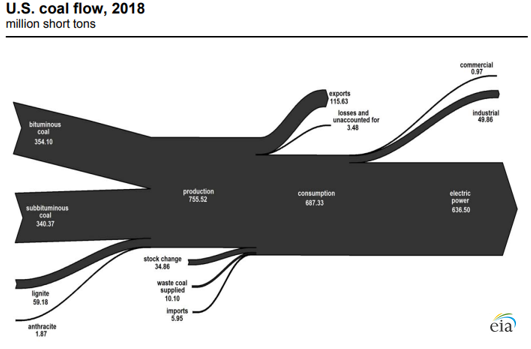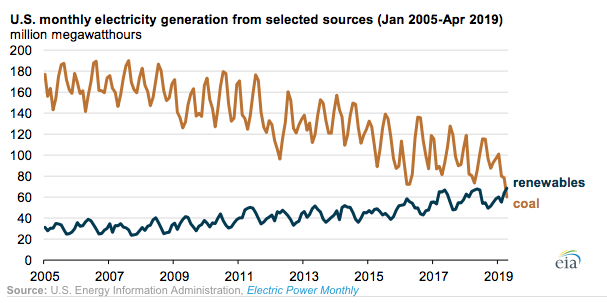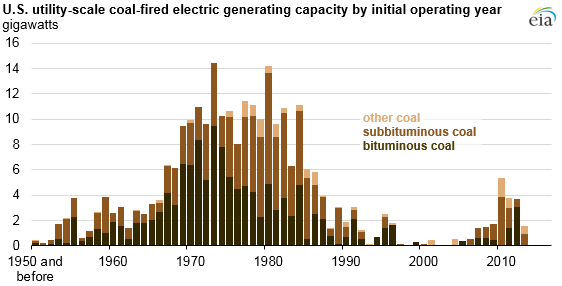Peter Lobner
US coal production was strong from the 1990s until 2014, with coal production each year being near or above 1 billion short tons (a “short ton” is 2,000 pounds). The highest annual level of production was achieved in 2008: 1.17 billion short tons. Since then, the coal industry has seen a steady decline in production, and trends indicate that the decline will continue.
In their 10 July 2019 report, “Almost all US coal production is consumed by electric power,” the US Energy Information Administration (EIA) reported that coal is still one of the main sources of energy in the US, accounting for 16% of the nation’s primary energy production in 2018. Nearly all of the coal consumed in the US is produced domestically, and most is consumed by the electric power sector to generate electricity, while some is exported. The following EIA “coal flow” diagram shows where the coal comes from and (approximately) how it was consumed in 2018. Total production was about 755 million short tons. The electric power sector consumed about 84% of production, with only modest amounts being consumed by the industrial sector or exported.

You’ll find this EIA report here: https://www.eia.gov/todayinenergy/detail.php?id=39792
Electricity generation from coal has been on the decline in the US for almost two decades. On 26 June 2019, EIA reported that US electricity generation from renewables surpasses coal in April 2019. In the following EIA chart, you can see the long-term increase in generation from renewables, which contrasts sharply with the long-term decline of generation from coal due to the decommissioning of many coal-fired power plan and the commissioning of no plants since about 2014.

You can read this EIA announcement here: https://www.eia.gov/todayinenergy/detail.php?id=39992
Between 2010 and the first quarter of 2019, US power companies announced the retirement of more than 546 coal-fired power units, totaling about 102 gigawatts (GW) of generating capacity. Plant owners intend to retire another 17 GW of coal-fired capacity by 2025. You’ll find the EIA’s 26 July 2019 report on decommissioning US coal-fired power plants here: https://www.eia.gov/todayinenergy/detail.php?id=40212
In April 2017, EIA reported that on the age of the US coal-fired generating plant fleet. The following chart shows the distribution of coal-fired plants based on their initial operating year. EIA reported a fleet average age of 39 years in 2017.

You’ll find this EIA report here: https://www.eia.gov/todayinenergy/detail.php?id=30812
The following table lists EIA data on the numbers of different types of generating plants in the US between 2007 and 2017. In 2007, the US had 606 coal-fired generating plants. By the end of 2017, that number had dropped to 359.

You’ll find the EIA data here: https://www.eia.gov/electricity/annual/html/epa_04_01.html
In another decade, coal-fired generation will be only a small part of the US electric power generation portfolio and the average fleet age will be about 50 years old.